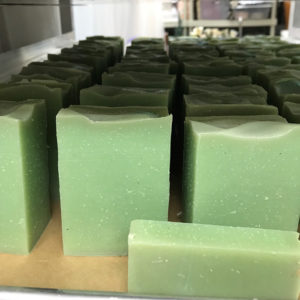 9 Ingredients in Big Brand Soaps to Avoid
9 Ingredients in Big Brand Soaps to Avoid
As consumers, we often trust popular big brand soaps for their advertised benefits and effectiveness. However, we must also be aware of the ingredients in these products that could harm our health and the environment. Here are nine common ingredients in big brand soaps that you should avoid:
1. Sodium Lauryl Sulfate (SLS) and Sodium Laureth Sulfate (SLES)
SLS and SLES are common foaming agents in personal care and cleaning products. They can cause skin irritation and lead to dryness, itching, and scaling. These ingredients can also cause eye irritation and problems for people with sensitive skin. Additionally, SLS is toxic to aquatic life and can have long-term effects on the environment.
2. Triclosan
Triclosan is an antibacterial agent that has been linked to the development of antibiotic-resistant bacteria. It is also harmful to aquatic life when it enters waterways and can cause hormonal imbalances in animals. In 2016, the US Food and Drug Administration (FDA) banned triclosan from consumer antiseptic wash products for its negative effects on health and the environment.
3. Parabens
Parabens are preservatives that are found in many personal care products, including soaps. They can mimic estrogen in the body and have been found to disrupt the hormonal balance in both men and women. Studies have also linked parabens to breast cancer and reproductive problems.
4. Phthalates
Phthalates are used to soften plastics and can be found in many fragranced products, including soaps. They can disrupt hormonal balance and cause developmental and reproductive problems in humans and animals.
5. DEA (diethanolamine), MEA (monoethanolamine), and TEA (triethanolamine)
DEA, MEA, and TEA are used to adjust the pH of products and create foam. They can cause skin irritation and drying and have been linked to kidney and liver damage in animal studies.
6. Propylene Glycol (PG) and Butylene Glycol
Propylene Glycol and Butylene Glycol are used to keep products from drying out. They can cause skin irritation and are allergenic for some people. Butylene Glycol is linked to cancer and can be toxic to the environment.
7. Synthetic Fragrances
Many big brand soaps contain synthetic fragrances that can cause skin irritation and allergic reactions. Synthetic fragrances can also release harmful chemicals such as phthalates into the environment.
8. Formaldehyde and Formaldehyde-Releasing Preservatives (FRP)
Formaldehyde and FRP are commonly used as preservatives in personal care products, including soaps. Formaldehyde can cause skin irritation and has been classified as a probable human carcinogen. FRPs can cause allergic reactions and skin sensitivity.
9. Synthetic Dyes
Synthetic dyes are used to create vibrant colors in many big brand soaps. However, they can cause skin irritation and allergies. Synthetic dyes can also have negative effects on the environment by contaminating water sources.
As consumers, we can take action to avoid these harmful ingredients by reading labels and choosing products with natural, plant-based ingredients. Look for products with organic, eco-friendly, or cruelty-free certifications. You can also make your own soap at home using natural ingredients such as coconut oil, shea butter, and essential oils.
Conclusion
In conclusion, it’s essential to pay attention to the ingredients in the products we use on our bodies and in our homes. Big brand soaps may promise many benefits, but they often contain harmful chemicals that can have a negative impact on our health and the environment. By avoiding the nine ingredients listed above, we can make more informed and sustainable choices for ourselves and the planet.



